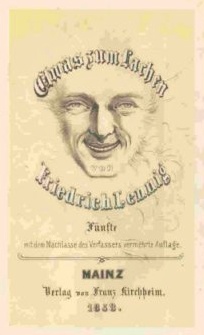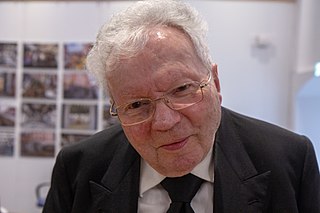
Rhineland-Palatinate is a western state of Germany. It covers 19,846 km2 (7,663 sq mi) and has about 4.05 million residents. It is the ninth largest and sixth most populous of the sixteen states. Mainz is the capital and largest city. Other cities are Ludwigshafen am Rhein, Koblenz, Trier, Kaiserslautern, Worms and Neuwied. It is bordered by North Rhine-Westphalia, Saarland, Baden-Württemberg and Hesse and by the countries France, Luxembourg and Belgium.

Trier, formerly known in English as Trèves and Triers, is a city on the banks of the Moselle in Germany. It lies in a valley between low vine-covered hills of red sandstone in the west of the state of Rhineland-Palatinate, near the border with Luxembourg and within the important Moselle wine region.

Speyer is a city in Rhineland-Palatinate in Germany with approximately 50,000 inhabitants. Located on the left bank of the river Rhine, Speyer lies 25 km south of Ludwigshafen and Mannheim, and 21 km south-west of Heidelberg. Founded by the Romans, it is one of Germany's oldest cities. Speyer Cathedral, a number of other churches, and the Altpörtel dominate the Speyer landscape. In the cathedral, beneath the high altar, are the tombs of eight Holy Roman Emperors and German kings.

Rabanus Maurus Magnentius, also known as Hrabanus or Rhabanus, was a Frankish Benedictine monk, theologian, poet, encyclopedist and military writer who became archbishop of Mainz in East Francia. He was the author of the encyclopaedia De rerum naturis. He also wrote treatises on education and grammar and commentaries on the Bible. He was one of the most prominent teachers and writers of the Carolingian age, and was called "Praeceptor Germaniae", or "the teacher of Germany". In the most recent edition of the Roman Martyrology, his feast is given as 4 February and he is qualified as a Saint ('sanctus').

The Johannes Gutenberg University Mainz is a public research university in Mainz, Rhineland Palatinate, Germany, named after the printer Johannes Gutenberg since 1946. With approximately 32,000 students (2018) in about 100 schools and clinics, it is among the largest universities in Germany. Starting on 1 January 2005 the university was reorganized into 11 faculties of study.

The Diocese of Mainz, historically known in English as Mentz as well as by its French name Mayence, is a Latin Church ecclesiastical territory or diocese of the Catholic Church in Germany. It was founded in 304, promoted in 780 to Metropolitan Archbishopric of Mainz and demoted back in 1802 to bishopric. The diocese is suffragan diocese in the ecclesiastical province of the metropolitan Archdiocese of Freiburg. Its district is located in the states of Rhineland-Palatinate and Hesse. The seat of the diocese is in Mainz at the Cathedral dedicated to Saints Martin and Stephen.
Alban of Mainz was a Catholic priest, missionary, and martyr in the Late Roman Empire. He is venerated as Saint Alban of Mainz in the Catholic Church, not to be confused with Saint Alban of Verulamium.

Oestrich-Winkel is a town with roughly 12,000 inhabitants in the Rheingau-Taunus-Kreis in the Regierungsbezirk of Darmstadt in Hesse, Germany.
Franz Anton Staudenmaier was a Catholic theologian. He was a major figure in the Catholic theology of Germany in the first half of the nineteenth century.

Michael Ebling is a German politician of the Social Democratic Party (SPD) who served as State Minister of the Interior in the government of Minister-President Malu Dreyer of Rhineland-Palatinate since 2022. From 2012 to 2022, he was the mayor of Mainz.

The Academy of Sciences and Literature is a scientific academy in Mainz, Germany. It was established in 1949 on an initiative of Alfred Döblin. The academy's goal is to support science and literature, and in doing so to help preserve and promote culture.

Julia Klöckner is a German politician of the Christian Democratic Union (CDU) who served as Federal Minister of Food, Agriculture and Consumer Protection in the government of Chancellor Angela Merkel from 2018 to 2021. Since 2012, she has also been part of the CDU leadership.
The following is a timeline of the history of the city of Mainz, Germany.

The Old Arsenal, also referred to as Zum Sautanz, was the central arsenal of the fortress of Mainz during the 17th and 18th century. In his function it was succeeded by the new arsenal. Currently the renaissance building is used by the Rhineland-Palatinate state chancellery and the Landtag of Rhineland-Palatinate.

Heinrich Bone was a German educator and hymnwriter. He wrote a reader for German studies which was used for higher education in Germany, Belgium, Luxembourg and Austria, until it was banned during the Kulturkampf. He published a hymnal, Cantate!, which was used by several Catholic dioceses and became a model for common hymnals. Some of his own hymns, including paraphrases of Latin hymns, are part of recent hymnals, both Catholic and Protestant, such as "Komm, Schöpfer Geist, kehr bei uns ein" as a paraphrase of the 9th-century hymn for Pentecost, Veni Creator Spiritus.
Ferdinand Scherf, is a German professor and historian. From 1970 to 2007 he was a teacher at the Rabanus-Maurus-Gymnasium in Mainz and editor of local historical works.

Johann Friedrich Lennig, also known as Fritz Lennig was a German poet, who wrote in the Hessian dialects.
Franz Dumont was a German historian.

Klaus Mayer was a German Roman Catholic priest in the Diocese of Mainz and was an honorary citizen of Mainz.
















